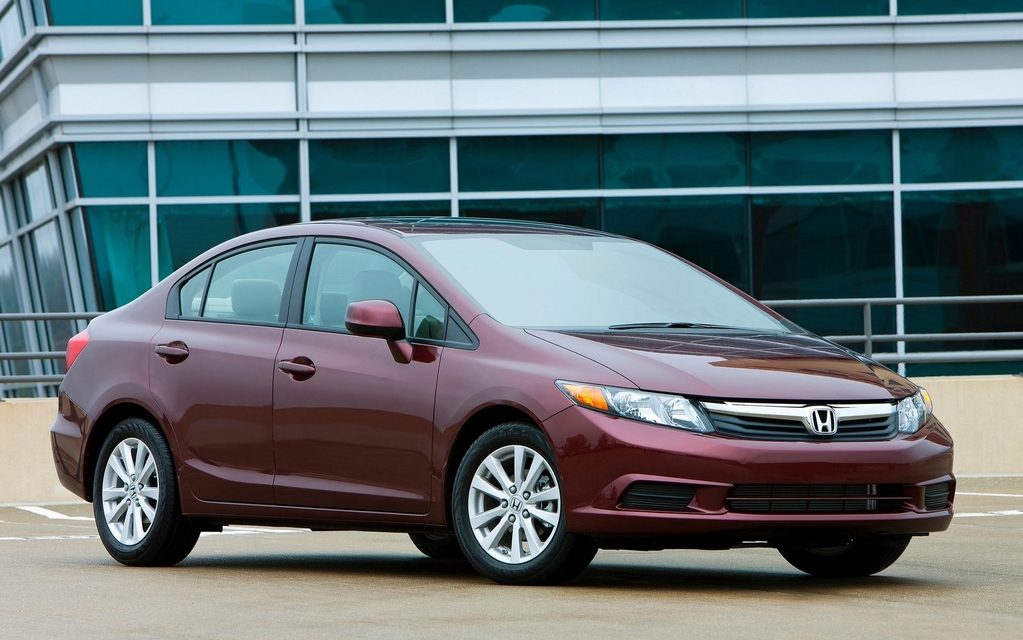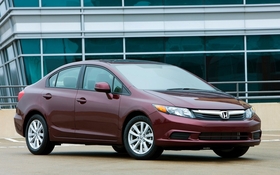2012 Honda Civic: Oatmeal on wheels!

| Strong points |
|
|---|---|
| Weak points |
|
The history of motorized transport is one that is, for the most part, mind-numbingly boring. Whilst historians crow and preen over red-blooded Italian sports cars and purposeful 4x4s, the reality is that for most, the automobile represent little more than an alternative to public transportation. For every car that raises heartbeats and draws stares, there are hundreds of others merely trudging about their daily business in beloved obscurity. And of these, few have reached the level of success that Honda’s immortal Civic has. Having sold almost innumerable copies of the venerable little Civic, and CVCC before it, Honda’s economy car has synonymous with stalwart, economical, and reliable transportation, albeit with a hint of driving enthusiast thrown in.
After the last generation polarized the market with its uniquely stumpy hood and door-stop silhouette, the new model boasts a (slight) move back towards the center of the economy car styling trend; the hood has grown a wee bit, the roofline has squared off slightly, and the flat-as-a-two-by-four trunklid is gone. But in appearing to chase Toyota’s crown of inoffensive and universally appealing design, the changes dull down the Civic’s appearance without introducing a whole lot to love. At least, they don’t when it comes to sedan. Thankfully, the coupe is a wee bit of a different animal. As with the sedan, the coupe has lost just over an inch between the wheelarches, but the longer hood makes for a much sleeker silhouette than last years’ snub-nosed profile. Maintaining the same sloping roofline as the outgoing model, the new Civic coupe owes a lot of its racy lines to the flowing C-pillar, but that particular component also makes the car look eerily similar to it’s bigger brother; the Accord coupe.
Inside, the story is much the same: plenty of evolution, but not a lot of imagination. Looking very similar to the previous model, the 2012 Civic’s dashboard boasts a larger version of the oft-maligned split-level design, with the speedometer now joined by an LCD multi-function readout above the tachometer. Below, the center cluster still wraps around the driver slightly, leaving either the afterthought-looking stereo controls or well-assembled infotainment display canted perfectly towards the driver. Sadly, that satisfyingly made navigation unit remains saddled with Honda’s familiar and aging infotainment software, which is a real shame in the modern era of high-resolution displays and video-game inspired animations and function. That said, it’s still a step above the downright awkward looking stereo controls that otherwise (attempt) to fill that space but really just look like they’re punishing you for neglecting to order the navigation system.
However, if you can get over the interior’s uninspired appearance, you’ll find yourself seated in what is actually a supremely comfortable car. With a low, well-sculpted driver’s seat that fits like a glove, the new Civic rapidly sets itself apart from the previous model by proving itself quite a bit more, ahem, luxurious. Thanks to a revised unibody structure and more high strength steel, the A-pillars are thinner and the greenhouse at least looks bigger as a result. With the optional sunroof, the sedan’s cabin is a downright airy place to be, due in part as well to the addition of four cubic feet to the interior cabin; an impressive feat given the car’s smaller footprint. Furthermore, extensive work done by the NVH gurus at Honda’s development facility have done a miraculous job of reducing the amount of sound that intrudes into the cabin from the road, engine, and transmission. Combine this with the soft and cushy ride that the non-Si Civics are imbued with, and you get a car that passes the kilometres in a leisurely and comfortable manner.
And that is a good thing, because the pace at which the kilometres are enjoyed will be anything but blistering. With the increased amounts of friction reducing coatings employed in the engine having no effect on performance (although they do increase efficiency and emissions), the same 1.5 litre four cylinder and optional five-speed automatic feel somewhat anaemic beneath the Civic’s roughly 2,700 pound body. Knocking on 100 kilometres an hour in nine seconds, the transmission’s clearly been programmed for economy instead of performance, and convincing the car to even begin exploiting its i-Vtec system requires pretty much full throttle. Similarly, although the helm does command the front wheels sharply, the soft suspension feels overladen in spirited corners, and the car lacks some of the precise verve with which previous Honda's tackled the twisties. But, that's the price you pay for a softer, better isolated ride down the highway.
Although the Civic isn't exactly in danger of fading into the economy car background, the reality is that it faces stiffer competition now than it has ever known, with Hyundai's Elantra already attracting the value-conscious, Ford's Focus draws off those looking for something a bit more luxurious, and the Mazda3 luring in the lead-footed. And it's precisely at a time like this that Honda's hard-won reputation for engaging driving dynamics would appear to be just as important as their reputation for reliability... but you wouldn't guess it from this latest effort. Looking more like oatmeal for your eyeball than ever before and driving like Ms. Daisy's in the back, it's a car that's almost unrecognizable from the days of the pocket-rocket EG and EH hatchbacks that paired engineered excellence with solid value. Moving further towards the staid sense of all-conquering practicality that's dominated the Corolla's development for eons, this Civic delivers much of the same "you get what you paid for" attitude as does the Toyota, at a time when other manufacturers are delivering cars that strive to offer more than their bottom line suggests.











